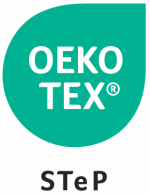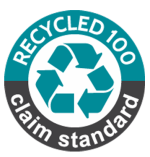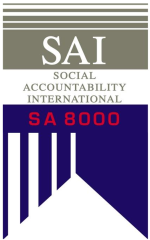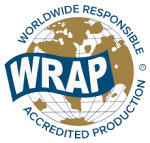
What requirements must apparel meet to be allowed on the European market?
This report will help you understand what the most important requirements are for the European apparel market and how you can comply.
Contents of this page
1. What are the mandatory requirements for apparel?
There are many legal requirements for exporting apparel to Europe, including those concerning product safety, use of chemicals (REACH), quality, labelling and intellectual property rights. Apparel for children has special consumer safety requirements (see below). Check the EU Access2Markets online helpdesk for an overview.
Additionally, many buyers have created special terms and conditions for their suppliers. These are usually shared with you via a buyer manual or a contract. Such terms and conditions are not required by law, but you still need to comply if you want to do business with the buyer.
Follow these steps to ensure that your product complies with the relevant legal requirements:
- Make sure your product complies with the EU’s General Product Safety Directive (GPSD: 2001/95/EC). If your buyer supplied the product design, it is their responsibility to guarantee it is legally safe for consumers to use;
- Make sure you comply with the EU’s REACH regulation. This restricts the use of chemicals in apparel and trims, including certain Azo-dyes, flame retardants, waterproofing and stain-repelling chemicals and nickel. To prevent non-compliance, test input materials before production;
- Pay special attention to the following safety standard that applies to apparel for children: EN 14682 (contains requirements to ensure that cords and drawstrings are placed safely on apparel for children up to age 14). Conduct a small parts cylinder test to check which parts are allowed, such as this online example of a small objects tester;
- Specify the material composition of every apparel item that you export to the EU, in line with Regulation (EU) 1007/2011. Check the EU Access2Markets online helpdesk on how to do this. Fibres which collectively account for up to 15% of the total weight, may be designated by the term ‘other fibres’;
- Do not violate any Intellectual Property (IP) rights and do not copy or share designs with other buyers. If your buyer provides the design, they will be liable if the item is found to violate a property right.
Figure 1: Every item of apparel exported to the EU must comply with legal requirements. Children’s wear has specific legal requirements.

Source: Photo by Michael Podger on Unsplash
National requirements for the use of chemicals
Some EU countries have national regulations for specific chemicals. For example, Austria, Finland, Germany, Norway and the Netherlands have specific regulations for formaldehyde in textiles. Austria, Denmark, Germany and the Netherlands also have specific regulations for PCP, while Germany also has regulations for dispersing dyes in textiles. Switzerland has its own regulation for chemicals, ORRChem. The UK’s own REACH regulationcame into force in 2021, after the country left the EU.
In 2025, France adopted a bill to ban the use of PFAS (‘forever chemicals’) in textile products by 1 January 2026, exempting certain protective gear. The ban will be extended to all textile products in 2030. This regulation is expected to be adopted EU-wide in the coming years.
Flammability
The EU has no specific legal requirements regarding apparel flammability. This risk is covered by the General Product Safety Directive. For products where flammability is a risk, standard EN 14878:2007 is supposed to asses that risk. Note that several European countries do have national policies concerning apparel flammability, including the UK, Ireland, the Netherlands and Switzerland (in German).
CE marking
If you want to export personal protective equipment (PPE) to the EU, for example safety garments or gloves, you have to comply with specific EU safety standards for the design, manufacturing, material use, testing and user instructions concerning PPE. You are obliged to affix CE marking to PPE as a visible indication that your product conforms with PPE safety requirements.
Biocides
If you add biocides to textiles to protect humans, animals, materials or articles against harmful organisms, such as pests or bacteria, you have to comply with the EU’s Biocidal Product Regulation (BPR) as well as REACH (see above). Additional information on the BPR can be found on the website of the European Chemicals Agency.
CITES
The use of endangered species of animals and plants or parts thereof in your product is restricted by the EU wildlife regulatory measures. This regulation is based on the Convention on International Trade in Endangered Species of Wild Fauna and Flora (CITES). Some species of animals and plants, such as leopard, certain crocodile species, wild orchids and certain wild cacti species, are excluded from use in apparel altogether, so you cannot use them in your products. Others are subjected to severe importing restrictions.
EU Digital Services Act
Very Large Online Platforms (VLOPs) and Very Large Online Search Engines (VLOSEs) that supply European end consumers directly are subject to the EU Digital Services Act (DSA). This means that these platforms are required to identify, analyse and report on risks relating to illegal products. These may include counterfeit goods, unsafe products, and items that infringe on intellectual property rights.
Tips:
- Check the Q&A section on the website of the European Chemicals Agency for answers to the most common questions about REACH and the use of chemicals in textiles and leather;
- Make sure you only work with suppliers of yarns, dyes, fabrics and leather, labels, prints, trims and accessories that are REACH compliant. Ask for proof that they are;
- Labelling the country of origin ‘Made in’ or labelling care instructions are not yet legally required in the EU. Including care labels in your apparel is highly recommended though. ISO 3758: 2012 is the preferred standard for care labelling. The care label symbols are property of the company GINETEX. You need to pay a fixed compensation to GINETEX for the use of these symbols;
- Check the EU’s Access2Markets trade helpdesk for information on topics such as tariffs, product requirements, custom procedures and taxes. Stay updated on product requirement developments with EPing. Open Trade Gate is another useful source of information on exporting to the EU and Sweden in particular;
- Check the EU’s Intellectual Property Office (EUIPO) website for examples of designs and trademarks and a database containing some of the designs protected by IP rights in the EU.
Non-legal mandatory requirements
Buyers may confront you with additional, company-specific terms and conditions. These requirements are usually written down in a buyer’s manual. By signing a contract with your buyer, you confirm that you will comply with all the requirements listed in the manual. You will be held accountable in case of a problem after the delivery of an order. If a buyer does not have a manual, make sure all terms and conditions are clear and agreed upon beforehand to avoid unpleasant surprises. The following topics may be included in a buyer’s manual.
Payment terms
For first-time orders, European buyers may give you a down payment via bank transfer (e.g. 30%). They will pay the rest (70%) before shipment, again via bank transfer. Buyers may also give you a bank guarantee. This statement guarantees that the sum will be paid on a certain date.
Another payment method is the L/C (letter of credit). With an L/C, the buyer’s bank must pay the supplier when both parties meet the conditions they have agreed upon. This is the safest payment method for a manufacturer. An L/C can also be used to get financing to purchase materials. However, many buyers no longer favour L/C payments because they block their cash flow. Also, the administrative costs in case of changes in delivery terms are high. Be aware that L/Cs do not offer financial protection against bankruptcies.
For any follow-up orders, most European buyers will ask for a TT (telegraphic transfer/open account) after 30, 60, 90 or sometimes even 120 days. This means that you, as a manufacturer, finish the production and hand over the shipment to the buyer, including the original documents, before payment is due. The payment will be made after the number of days you have agreed upon with the buyer. This is a risky payment agreement because you, as the manufacturer, take full financial risk.
Note that certain production countries confiscate incoming US dollars because the country suffers from a general lack of foreign currency reserves. Not having US dollars makes it difficult for manufacturers to source materials abroad. To work around this, some manufacturers ask their buyers to pay via a third location, for example Dubai (Hong Kong also used to be popular). This workaround is illegal in some production countries. Always follow local laws.
Another issue to be aware of when receiving foreign payments is local inflation. If your country faces high inflation and you get paid for your product in US dollars, you, as a manufacturer, benefit from the exchange rate. Some European buyers want to keep this benefit for themselves and ask to pay you in your local currency. Be aware of this, because a lack of foreign currency can make it very difficult for manufacturers to source materials abroad.
Tips:
- Do not accept payment terms that pose too great a risk for your factory. Realise that you aren’t the only factory that has recently pushed back by asking for safer payment conditions;
- Negotiate payment terms that balance the interests for both parties. For example, consider shorter payment periods or partial payments throughout the production process;
- Consider factoring to finance materials. This means you sell your order to a bank or factoring company that pre-pays you a certain percentage of the value of the order in exchange for a commission. An additional benefit is that the bank will perform due diligence on the buyer, which tells you if they are a trustworthy business partner;
- Trust works both ways. Establishing a trusted relationship with buyers can lead to more favourable payment terms over time. Consistently deliver quality products and maintain transparent communication;
- Be transparent and share your challenges with the buyer so that they understand the risks of doing business;
- If inflation is high in your country, cut costs by trying to source materials locally.
Delivery terms
Free on Board (FOB) is the standard Incoterm used by buyers and sellers to agree on delivery of goods. With FOB, the buyer becomes responsible for the goods once you have delivered them to the vessel. Due to rising shipping costs and risky sea travel via the Red Sea, some buyers may ask you to agree on Delivery Duty Paid (DDP). This means you, as a seller, are responsible for the goods during the entire journey, except for unloading by the buyer. This is the riskiest Incoterm for you as a manufacturer, so watch out!
Nominated suppliers
Some buyers may require you to purchase materials (fabrics, trims, labels, packing materials) from a nominated supplier. This means you are responsible for the ordering, delivery and payment of the materials (but not the quality, as this is confirmed beforehand by the buyer). This may negatively impact your flexibility, cost, speed and liquidity. Discuss locally available solutions with your buyer to replace nominated suppliers.
Acceptance quality limit
To guarantee product quality, your buyer may set an acceptance quality limit (AQL). This refers to the worst quality level that is still acceptable. For instance, AQL 2.5 means that your buyer will reject a batch if more than 2.5% of the items are defective. Defects are classified as critical, major and minor. Buyers will specify their expectations in the inspection protocols. Industry network Eurofins gives the following general definitions:
- Critical: a defect that fails to meet mandatory regulations and/or affects the safety of end consumers;
- Major: a defect that leads to product failure and reduces the product’s useability and/or saleability;
- Minor: a defect that shows deviation from quality standards but is not likely to reduce the useability or saleability of a product.
Packaging requirements
Typically, your buyer will give you instructions on how to package the order. If you agree on delivering Free on Board (FOB), your buyer will clear customs in the country of import. It is their responsibility to ensure the instructions on the packaging comply with EU import procedures.
In 2025, the EU adopted a new Packaging and Packaging Waste Regulation (PPWR), aimed at reducing packaging use and the use of virgin materials, as well as increasing the use of recycled plastics in packaging and making all packaging recyclable by 2030. Always try to lower the environmental impact (and financial cost) of packaging materials. For example, you can try using materials made from recycled cardboard (including hangers) or biodegradable plastics (polybags).
Restricted substances
Ask your buyer if they use a Restricted Substances List (RSL). These lists are often inspired by the guideline on safe chemicals use from the Zero Discharge of Hazardous Chemicals (ZDHC) foundation. Download the ZDHC Conformance Guidance here.
Transparency
Supply chain transparency is key for the European apparel industry. The EU’s Corporate Sustainability Due Diligence Directive (CSDDD) and the Corporate Sustainability Reporting Directive (CSRD) require larger European companies to report on how they identify and mitigate social and environmental risks. This means you should disclose information about your own operations to buyers, but also help them gain as much insight as possible into their (and thus your) entire supply chain and the materials used.
The push for more transparency is also aimed at offering European end consumers more insight into the way garments are produced and what materials are used. The new Ecodesign for Sustainable Products Regulation (ESPR, 2024) will introduce a Digital Products Passport, a digital identity card for garments and materials. Information on this card can include:
- The product’s technical performance;
- Materials and their origins;
- Repair activities;
- Recycling capabilities;
- Lifecycle environmental impacts.
Transparency also means not making claims about products that cannot be substantiated by facts. The EU’s new ‘Green Claims’ Directive aims to stop companies from using vague or misleading claims about the sustainability of their products (including apparel).
Equality
Your buyer may also require that you pay attention to diversity and inclusion in your workforce. All individuals in your company should have equal opportunities, regardless of gender, race, religion or other characteristics. This can result in more creativity and innovation, as well as better problem-solving.
Animal welfare
If you use natural protein fibres such as wool (including specialty wools like merino, mohair, angora or cashmere) or silk, animal welfare is an important concern. Buyers may require that you only use RWS-certified wool. For merino, buyers may require that you use only non-mulesing wool.
Regenerative agriculture
Organic cotton is popular among European Fashion sportswear brands. Check, for instance, H&M or Ecoalf. Efforts to make cotton production more sustainable have expanded to include ‘regenerative agriculture’. This is a concept focused on phasing out harmful fertilisers and pesticides and ‘regenerating’ nature, including biodiversity, soil health and water.
Several large European apparel retail groups have set goals in this area, including H&M and Inditex. Global certifying body Control Union has introduced a certification for regenerative agriculture, regenagri, which is already being used by several cotton farms worldwide.
(Anti-)Deforestation
The EU has introduced new legislation, EUDR, to prevent import to the EU of products manufactured on deforested land. Currently, this applies only to the import of leather (skins), but the legislation foresees an evaluation and possible expansion of the deforestation-free product list.
Carbon footprint
Many European brands have committed to climate neutrality. Check, for instance, H&M’s climate goals, which have been verified by the Science Based Targets Initiative. Calculating the CO2 footprint of an apparel item is a complicated process that starts with carefully measuring your emissions before reducing them. Several organisations have set benchmarks for certain materials and/or products. For more information, check the CBI studies Tips to go green and Tips to measure and reduce your carbon emissions.
Recycling
The EU is introducing new legal measures to increase circularity, including new directives on durability and ecodesign of textile products and a ‘right to repair’. It is also considering the introduction of an EU-wide extended producer responsibility (EPR) for apparel. This makes companies responsible for the way their products are disposed of, recycled or repaired. Some countries already have national EPR schemes. Recycling and repurposing materials helps your buyers reduce waste and save resources.
Certification
Many European buyers require suppliers to get certified for sustainable and/or fair production or the use of sustainable materials. The following standards and certifications are most popular in Europe. Note that BSCI is almost a standard requirement for many European apparel companies.
Table 1: Europe’s most popular standards
| Name of standard | Logo | Type of compliance | Further information on getting certification |
|---|---|---|---|
| Amfori BSCI | Social | On invitation by buyers. Amfori provides a list of organisations that can perform an audit. | |
| B-Corp |

| Social, environmental | Check the B-corp certification process here. |
| GOTS |

| Social, environmental (organic production) | GOTS provides a list of organisations that can perform an audit. |
| OEKO-TEX® STeP |

| Social, environmental | Check the OEKO-TEX® STeP application process here. |
| Recycled Claim Standard |

| Environmental (material recycling) | Check how to get certified. |
| SA8000 |

| Social, environmental | Check how to get certified here. |
| Sedex | Social, environmental | Check how to become a member here. | |
| WRAP |

| Social | Check the WRAP certification process here. |
Source: FT Journalistiek
Tips:
- For a complete list of certification schemes in the sector consult the ITC Standards Map. Filter by theme, pillar (environmental, social) and product (textiles/garment) to find the standards most relevant to your business;
- Check this freely accessible CSR Risk Check tool to discover the social and environmental risks associated with garment production in your country and ways to manage them;
- Be aware that complying with a standard costs time and money, not only for the application and the audit, but also for its annual renewal. Because many standards have overlapping criteria, often a few simple interventions will make your factory compliant with more than one standard. Talk to your buyers about such adjustments to avoid having to process several different standards;
- Familiarise yourself with the Social & Labor Convergence Project. This is an industry initiative to avoid duplication of audits;
- Note that much of the social and environmental impacts take place at your suppliers. Try to be as transparent as possible and help your buyers to trace the origins of products;
- Assess your company’s current performance by doing a self-assessment: BSCI for textile factories and LWG’s ‘Tannery of the Future: are you ready for an audit?’ for leather garment producers.
2. What additional requirements and certifications do buyers ask for in the apparel sector?
In addition to mandatory requirements, there are many services that buyers implicitly expect or at least highly appreciate, if you want to do business with them.
Product design and development
Most buyers have their own design team, but having your own ideas on product design and development will be highly appreciated. Buyers are always looking for special designs, materials or production methods that may help them stand out in the market.
For instance, consider using: on-trend sustainable materials; special finishings such as coatings and prints; stretch fabrics for extra comfort; special property fabrics (for instance, with soil-resistant, breathing, waterproof, anti-bacterial or UV-protective properties); quick-drying, easy iron and crease-resistant fabrics; stay dark fabrics (colour fastness); and garment dyeing during production to increase flexibility.
Do not underestimate how difficult it is to understand trends in the European market and translate them to successful apparel items. Trends today evolve much quicker than in previous decades, when brands and retailers used to rely on fashion shows and experts to determine seasonal trends. Today, thanks to technology, new trends can be set within days and by many different actors – not just fashion designers, but also influencers on social media like Instagram and TikTok, fashion bloggers and celebrities.
Tips:
- Stay informed about the latest market trends in fashion. Check Fibre2Fashion’s online fashion trends page and sign up for trend forecaster WGSN’s newsletter or fashion consultancy EDITED’s Insider Briefing. Tools like Heuritech and Meltwater can help you forecast trends and design on-trend collections;
- Other online fashion platforms widely followed by European buyers are FashionUnited, Just-Style, The Business of Fashion, Leatherbiz (for leather products) or Sourcing Journal;
- Check the websites of Fashion for Good and Springwise (type in ‘apparel’, ‘fashion’ or ‘leather’ in the search bar) for the latest innovations in apparel design and production. Check Material District for the latest innovations in materials;
- Hire a designer to help you with your fabric selection and design input. Post your job offer on The Business of Fashion, FashionUnited or HTNK. For freelance designers, try Upwork or Fiverr.
Garment care preferences
When selecting base materials, keep in mind that most consumers in Europe prefer easy to care for, machine-washable garments. Try to avoid dry-clean-only products, unless you have a specific agreement about this with your buyer.
Communication
Smooth communication is an implicit requirement that all buyers have. Be prepared to follow these basic rules if you want to successfully do business with European buyers:
- Always reply to every email within 24 hours. Even if it is just to confirm that you have received the email and to say that you will provide a proper reply later;
- If you encounter a problem with a production order, immediately notify the customer and try to offer a solution;
- Create a critical path for every order and share it with your buyer. A critical path maps every single step in the production process and the time each step takes. This file will help you to manage expectations, monitor progress and is the best guarantee for on-time delivery;
- Create a communication file of every order so you build up a case history. This file is your backup in case of a complaint;
- 3D designing and prototyping tools including 3D design software providers like CLO, Gerber, Alvanon and refabric can help you speed up the approval process.
Speed to market
Fashion companies like Zara have proven that having the right product at the right time is at least as important as being the cheapest. Buyers try hard to minimise stock and order as late as possible. Manufacturing and delivering fast is an important implicit requirement, just like flexibility in order quantities (see below).
Expect stricter requirements on order quantities and delivery times, since European brands and retailers are struggling to attract and hold the attention of consumers. Instead of four or even 12 collections a year, ever more retailers are releasing as many as one micro collection per week, year-round. Ultrafast online fashion retailers like Shein and Temu mimic trends that pop up any moment during the fashion seasons.
There are different ways to shorten lead times:
- Keep stock materials to increase flexibility. Source from fabric suppliers that work with stock yarns and that can help you reduce manufacturing time. To increase efficiency and speed, make sure you have all necessary materials available before starting production, including fabrics, zippers, buttons (and other trims) and packaging materials;
- Confirm lab dips (a small swatch of fabric to define colour and its recipe before it goes for bulk dyeing), trims and style before the final order is placed;
- Ask your buyers for a seasonal sales forecast and regular sales updates, to help plan your production capacity.
Flexibility
If you want to start a business relationship with a European buyer, be prepared to first accept complicated orders. Buyers will want to test your factory before giving you large, easy orders. Make sure at the start that a buyer will not continue to place only difficult orders with you and convenient orders elsewhere.
Expect a European buyer to require in their first order:
- High material quality and impeccable workmanship;
- Order quantities below your normal minimum order quantity (MOQ);
- A price level that is lower than you would normally accept for small-quantity orders.
To increase flexibility, factories may install a sample room (to produce small orders), a modular production set-up (island instead of production line), or a U-shaped set-up, where employees can control several machines at the same time.
Factories in different GSP countries
When all other selling points are equal, European buyers will prefer manufacturers that operate in countries under the EU’s Generalised Scheme of Preferences (GSP). The scheme removes import duties from apparel exported to the EU from low and lower-middle income countries worldwide, giving buyers a substantial financial advantage.
Tips:
- Check if your country is one of the countries that falls under the GSP;
- If you are supplying from a country on the GSP list, promote yourself as such on your website and in the promotional materials that you use during a trade fair visit;
- If you are not supplying from a country on the GSP list, consider setting up a partnership with a factory from a country that is on the list.
Examples of successful exporters to the EU
The following garment manufacturers are good examples of companies that have successfully put the additional requirements mentioned above into practice.
- Arvind India is a vertically integrated fabric and apparel manufacturer specialised in wovens. The company offers anything from fabrics to design to CMT. It has an extensive paragraph on sustainability on its website, including KPI’s on materials, workers and production processes;
- Eco Couture is a vertically integrated full-service apparel manufacturer from Bangladesh. The company exports sportswear to buyers like PUMA, VF Company and Marks & Spencer. Eco Couture is part of the Viyellatex Group, which invests in sustainable operations (energy-saving technology, waste treatment) and social compliancy. Viyellatex prides itself in being the only organisational stakeholder in Bangladesh that is part of the Global Reporting Initiative (GRI);
- Crossing in Morocco is a nice example of a modern factory offering graphic design, cutting, sewing, washing, printing and embroidery. The company offers BCI, organic or recycled fabric, 3D pictures and video of samples for pattern checking.
3. What are the requirements and requested certifications in the niche apparel markets?
Niche markets are markets that have a specific target group with special requirements, such as low order quantities, specific dying processes, tech add-ons and special fabrics. Because of this, most mainstream providers do not service this group. However, as sales in the mainstream fashion market are continuously under pressure, ever more European buyers are targeting niche markets to achieve growth. So can you.
When entering the following high-opportunity niche markets, expect very specific buyer requirements:
- Apparel made from recycled materials. Yarns and fabrics made from recycled cuttings and post-consumer waste are becoming increasingly popular — and not just with brands and retailers that promote themselves as sustainable. The most asked-for standards here are the Textile Exchange’s Recycled Claim Standard and Global Recycled Standard. Read the CBI study on Recycled Fashion for more information;
- Vegan apparel. In the wake of the growing vegan trend in Europe, apparel made without using or harming animals is a small but growing niche. If you use plant-based or synthetic alternatives to materials such as leather or wool, you can apply for the PETA-Approved Vegan certification. The PETA website offers a database with PETA-Approved Vegan brands. Read the CBI report on sustainable apparel for information on this niche;
- Children’s wear. Use of organic cotton is especially popular in baby and children’s wear, as many parents are willing to pay extra for materials that are grown without the use of chemicals. GOTS is a popular standard for children’s wear. Remember that children’s wear also needs to comply with EU Regulation regarding the safe attachment of drawstrings and accessories (see mandatory requirements above). Read the CBI report on children’s wear;
- Knitwear made from animal protein fibres. When using wool, be aware that buyers may require that you only use RWS-certified wool. If you use merino, buyers may ask for the non-mulesing variant. The use of Angora and Mohair is already banned by many European brands due to animal cruelty concerns. Read the CBI report on knitwear;
- Denim: many European denim brands have pioneered sustainable production techniques and the use of sustainable materials. You may expect European buyers to require the use of fabrics with recycled or regenerated fibres, water-saving techniques, the use of all-natural dyes, sustainable fading techniques including ozone washing, laser engraving and printing, and the phasing out of leather patches. Read the CBI report on denim;
- Work wear. This is a niche with several sub-niches, including apparel that protects against rain and foul weather, liquid chemicals, fire and flames, the thermal hazards of an electric arc and high-visibility apparel. Check the EU Regulation on PPE and its many different related norms and standards (PDF). Read the CBI report on workwear;
- Corporate wear. Many large organisations like banks and hotels tender their corporate wear. These are usually three-year contracts in which a supplier needs to guarantee the quality and colour consistency of deliveries. Expect no specific legal requirements but high demands regarding stock keeping, flexibility, printing, colour fastness and fabric quality;
- High-performance wear. Companies developing high-performance wear try to create individual USPs on their garments and collection that will help athletes with their performance. Expect no specific legal requirements, but high demands regarding breathability, durability (abrasion, adhesion, colour fastness) and water resistance. Read the CBI report on fashion sportswear for more information on this niche;
- Adaptive apparel. People with certain disabilities or medical conditions often cannot wear regular clothing. Adaptive apparel is constructed in a way that the target group can dress and undress without or with only minimum help. This apparel can also have technical, supportive, moisture control or anti-bacterial functions. Expect no specific legal requirements, but high demands regarding technical textiles, sizing and shape. Read the CBI report on Adaptive apparel;
- Swimwear. UV-protective swimwear is growing in popularity in Europe as consumers become more aware of the risk of sunburn. Read the CBI report on swimwear;
- Leather fashion. To avoid the risk of Chromium VI in leather apparel and accessories, ever more buyers are requiring chrome-free leather tanning. This can be either vegetable tanned or wet-white tanned leather. The most popular certification for leather is Leather Working Group. Two new standards are the Sustainable Leather Foundation (SLF) and Textile Exchange’s Leather Impact Accelerator (LIA). Read the CBI study on leather fashion accessories;
- Modest wear. Many people with an Islamic background prefer ‘modest’ styles. In Europe, this target group is underserved but growing. Source for materials that obscure the female silhouette, so no fabrics that are too stretchy or too thin. For specific requirements, read the CBI study on Islamic wear;
- Special sizes. Following the ‘body acceptance’ trend, ever more European fashion brands have started to include silhouettes in their size range for specific body types, such as plus size, petit, tall and maternity fashion;
- Made-to-order fashion is a growing niche, helped by the rise in AI-powered design tools and increasingly automated apparel factories. Made-to-order offers consumers highly personalised apparel items. This requires from manufacturers ultra-high flexibility and fast delivery, achieved only by a high level of digitalisation and automation. Read the CBI study about digitalisation in the apparel industry.
Further Reading
The CBI report ‘10 tips for finding European buyers’ can help you with finding interesting prospects and how to approach them.
The CBI study ‘10 tips for doing business with European buyers’ provides tips on how to successfully approach a potential buyer and develop a long-lasting business relationship with them.
FT Journalistiek carried out this study in partnership with Giovanni Beatrice on behalf of CBI.
Please review our market information disclaimer.
Search
Enter search terms to find market research
